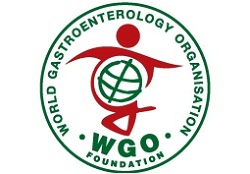



Travelers' diarrhea (TD) is the most common illness affecting travelers. Each year between 20%-50% of international travelers, an estimated 10 million persons, develop diarrhea. The onset of TD usually occurs within the first week of travel but may occur at any time while traveling, and even after returning home. The most important determinant of risk is the traveler's destination. High-risk destinations are the developing countries of Latin America, Africa, the Middle East, and Asia. Persons at particular high-risk include young adults, immunosuppressed persons, persons with inflammatory-bowel disease or diabetes, and persons taking H-2 blockers or antacids. Attack rates are similar for men and women. The primary source of infection is ingestion of fecally contaminated food or water.
Most TD cases begin abruptly. The illness usually results in increased frequency, volume, and weight of stool. Altered stool consistency also is common. Typically, a traveler experiences four to five loose or watery bowel movements each day. Other commonly associated symptoms are nausea, vomiting, diarrhea, abdominal cramping, bloating, fever, urgency, and malaise. Most cases are benign and resolve in 1-2 days without treatment. TD is rarely life-threatening. The natural history of TD is that 90% of cases resolve within 1 week, and 98% resolve within 1 month.
Infectious agents are the primary cause of TD. Bacterial enteropathogens cause approximately 80% of TD cases. The most common causative agent isolated in countries surveyed has been enterotoxigenic Escherichia coli (ETEC). ETEC produce watery diarrhea with associated cramps and low-grade or no fever. Besides ETEC and other bacterial pathogens, a variety of viral and parasitic enteric pathogens also are potential causative agents.
Travelers can minimize their risk for TD by practicing the following effective preventive measures:
If handled properly well-cooked and packaged foods usually are safe. Tap water, ice, unpasteurized milk, and dairy products are associated with increased risk for TD. Safe beverages include bottled carbonated beverages, hot tea or coffee, beer, wine, and water boiled or appropriately treated with iodine or chlorine.
CDC does not recommend antimicrobial drugs to prevent TD. Studies show a decrease in the incidence of TD with use of bismuth subsalicylate and with use of antimicrobial chemoprophylaxis. Several studies show that bismuth subsalicylate taken as either 2 tablets 4 times daily or 2 fluid ounces 4 times daily reduces the incidence of travelers' diarrhea. The mechanism of action appears to be both antibacterial and antisecretory. Use of bismuth subsalicylate should be avoided by persons who are allergic to aspirin, during pregnancy, and by persons taking certain other medications (e.g., anticoagulants, probenecid, or methotrexate). In addition, persons should be informed about potential side effects, in particular about temporary blackening of the tongue and stool, and rarely ringing in the ears. Because of potential adverse side effects, prophylactic bismuth subsalicylate should not be used for more than 3 weeks.
Some antibiotics administered in a once-a-day dose are 90% effective at preventing travelers' diarrhea; however, antibiotics are not recommended as prophylaxis. Routine antimicrobial prophylaxis increases the traveler's risk for adverse reactions and for infections with resistant organisms. Because antimicrobials can increase a traveler 's susceptibility to resistant bacterial pathogens and provide no protection against either viral or parasitic pathogens, they can give travelers a false sense of security. As a result, strict adherence to preventive measures is encouraged, and bismuth subsalicylate should be used as an adjunct if prophylaxis is needed.
TD usually is a self-limited disorder and often resolves without specific treatment; however, oral rehydration is often beneficial to replace lost fluids and electrolytes. Clear liquids are routinely recommended for adults. Travelers who develop three or more loose stools in an 8-hour period---especially if associated with nausea, vomiting, abdominal cramps, fever, or blood in stools---may benefit from antimicrobial therapy. Antibiotics usually are given for 3-5 days. Currently, fluoroquinolones are the drugs of choice. Commonly prescribed regimens are 500 mg of ciprofloxacin twice a day or 400 mg of norfloxacin twice a day for 3-5 days. Trimethoprimsulfamethoxazole and doxycycline are no longer recommended because of the high level of resistance to these agents. Bismuth subsalicylate also may be used as treatment: 1 fluid ounce or 2 262 mg tablets every 30 minutes for up to eight doses in a 24-hour period, which can be repeated on a second day. If diarrhea persists despite therapy, travelers should be evaluated by a doctor and treated for possible parasitic infection.
Antimotility agents (loperamide, diphenoxylate, and paregoric) primarily reduce diarrhea by slowing transit time in the gut, and, thus, allows more time for absorption. Some persons believe diarrhea is the body's defense mechanism to minimize contact time between gut pathogens and intestinal mucosa. In several studies, antimotility agents have been useful in treating travelers' diarrhea by decreasing the duration of diarrhea. However, these agents should not be used by travelers with fever or bloody diarrhea, because they can increase the severity of disease by delaying clearance of causative organisms. Because antimotility agents are now available over the counter, their injudicious use is of concern. Adverse complications (toxic megacolon, sepsis, and disseminated intravascular coagulation) have been reported as a result of using these medications to treat diarrhea.
You can also download a PDF version of the Questions and Answers here: FAQ on Travelers Diarrhea